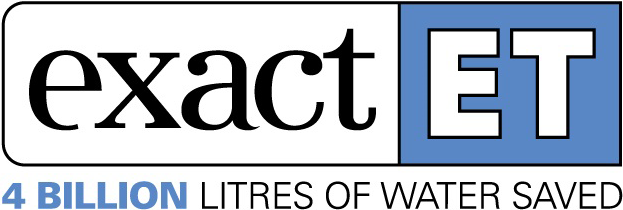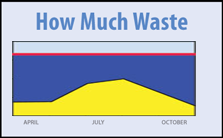Recommendations - Existing Properties
-
Require Irrigation Scheduling using Climate Controlled Irrigation Program:
i.e. System monitors and uses weather information to automatically apply the optimum amount of water when needed. -
Program should:
- Irrigate to MAD - Managed Allowed Depletion
- Use Real-Time weather data to measure true ET (evapotranspiration). Historical or extrapolated ET is not near as effective. (i.e. garbage-in, garbage-out)
- Use a Rain Gauge (not a Rain Sensor) to measure Effective Rainfall to interrupt and adjust irrigation scheduling
- Employ efficient irrigation scheduling - i.e. irrigation run times developed based upon a complete site analysis.
-
Require seasonal system inspections to ensure proper maintenance is performed and the system is operating as it was designed:
- Broken irrigation mainline/lateral water lines/sprinklers are identified and repaired
- Low/ wrongly aligned/tilted sprinklers are identified and corrected.
- Require an annual water performance review and report to evidence outdoor water efficiency (i.e. Water Savings Report)
Irrigation Industry recommended distribution uniformity (DULQ) and emission uniformity (EU) standards.
| Type of Zone | Type of Uniformity | Minimum Uniformity |
|---|---|---|
| Spray | DULQ | 0.55 |
| Rotor | DULQ | 0.70 |
| Drip/Micro-Irrigation | EULQ | 0.80 |
To truly measure moisture loss (ET) and apply the optimum amount of water to the landscape when needed, the weather data should be real-time and come from well maintained, local weather stations specifically designed for ET monitoring (i.e. measuring solar radiation; air temperature; relative humidity; wind speed; and, rainfall).
Not all rainfall measured is considered effective rainfall. Effective Rain is the amount of rain which is useful to the plants. Rain that falls to quickly will run-off before reaching the root zone, and rain that falls when the soil is completely saturated will run-off as well. Effective Rain factors in Maximum Hourly Rainfall Rate and Saturation Allowance. A Rain Sensor is a simple 'on-off-switch' that only interupts irrigation during a rain event.
Individual irrigation run-times (i.e. irrigation duration expressed in minutes for each irrigation zone) should be determined based-upon site conditions for each zone (i.e. plant type; root depth; soil type; slope; shading; and, precipitation rates for the sprinkler system). As opposed to being set based upon industry norms for rotor sprinklers and spray sprinklers.


